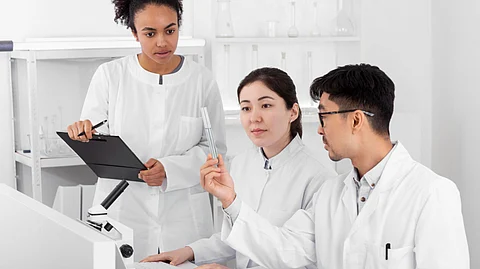A timeline sequence of Takahashi studies
1998 and 2001- Adenocyte mediated gain of function Msx 2 expression.
2007- USAG-1 abrogation and supernumerary tooth formation.
2008- USAG-1 deficient mouse and supernumerary teeth formation.
2014- USAG-1 and BMP-7 interactions and supernumerary teeth formation
2016- USAG-1 and BMP-7 deficiency and impact on murine tooth morphogenesis.
2017- Wnt10a in Japanese congenital tooth agenesis.
2018 and 2019- Third dentition is the main cause
2021- Therapeutic potential of USAG-1 and USAG-1 siRNA in tooth regeneration.
With identification and reporting of mice with USAG-1 deficiency and supernumerary teeth in 2007, Takahashi et al, 2023, employed mouse models and molecular techniques to reveal successful tooth regeneration. Studies included on administration of single systemic and dose-dependent USAG-1-targeting antibodies in EDA1-deficient (Ectodysplasin-1) and wild-type mice ameliorated tooth agenesis have resulted in the promotion of natural tooth formation. The antibodies, which are generated by neutralizing USAG-1, have action on BMP signaling and also reduce low Lrp5/6 dosage recovered the USAG-1-null phenotype, including hyperdontia. Several mice have died in this Lrp5/6 study, thereby providing information on Wnt signaling regulation.
Takahashi et al. further aimed to focus on the shortcomings and improved their observational studies, focusing on the protein analysis of USAG-1 targeting antibodies, which revealed an association between USAG-1 and Msx-1 and a successful regeneration of a tooth in mice with tooth agenesis noted.
A single systemic administration of USAG-1 targeting antibodies did not cause any side effects in the lineage of mice. These findings brought a correlation of USAG-1 targeted antibodies and EDA-1 deficient mice that could help in promoting tooth regeneration, furthermore highlighting the important role of USAG-1 in tooth agenesis.
Takahashi et al analyzed 78 patients where the third dentition is the cause of additional teeth. Researchers also revealed that on systemic application of USAG-1 targeting antibodies in ferrets could regenerate a tooth identical to the third dentition. This result is uplifting as ferrets share a similar dental pattern to those of humans. The clinical application of USAG-1 targeting antibodies that regenerate lost teeth needs additional safety and efficacy assurance in nonrodent models.
Any precise factors to control for all 28 teeth is not determined. The administration of an anti-USAG-1 antibody help to control the eruption of a regenerated tooth with accurate morphology, correct eruption timing, adequate calcification, and region. Because USAG-1 protein has only the possibility to save the developmental arrested tooth germ, which had been programmed to a certain tooth type.
Although this was a mouse study, the possibility of similar results in humans is still promising. Showcasing these results in humans would support the suggestion of “third dentition,”.
The tooth regeneration is very effective by usage of the Anti-USAG-1 antibody treatment in mice, and this can be a breakthrough in treating tooth anomalies in humans.
References
1. Ravi, V, A Murashima-Suginami, H Kiso, Y Tokita, CL Huang, K Bessho, J Takagi, M Sugai, Y Tabata, and K Takahashi. "Advances in Tooth Agenesis and Tooth Regeneration." Regenerative Therapy 22, (2023): 160. Accessed March 17, 2025. https://doi.org/10.1016/j.reth.2023.01.004.
By Dr. Lakshmisahithi Tanneru
MSM


